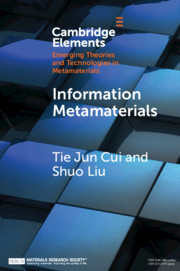Refine search
Actions for selected content:
1 results

Information Metamaterials
-
- Published online:
- 23 January 2021
- Print publication:
- 18 February 2021
-
- Element
- Export citation
